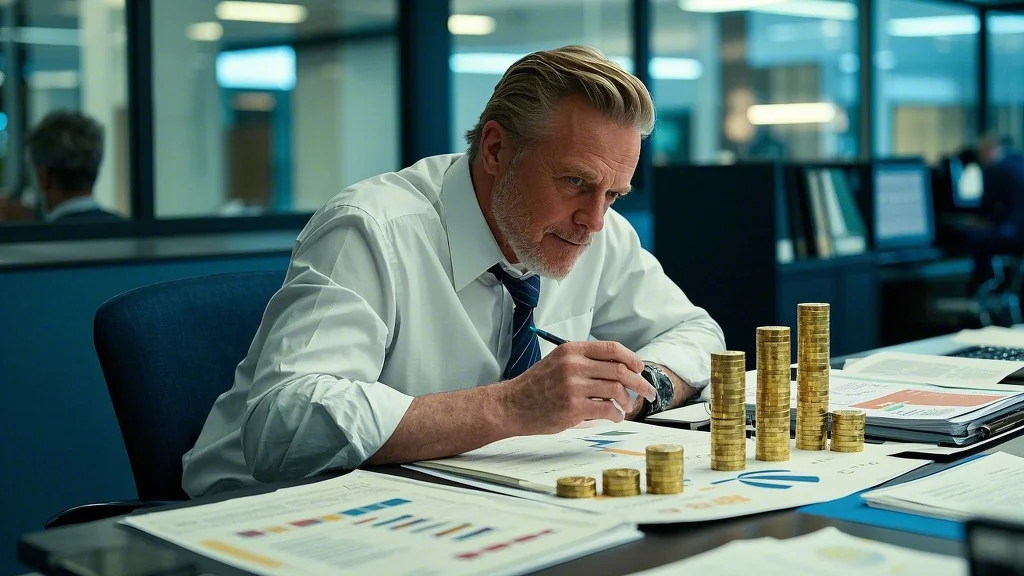The Art and Science of Portfolio Diversification
True portfolio diversification goes far beyond simply owning different stocks – it’s about constructing a collection of investments that respond differently to various economic environments. In today’s interconnected global markets, effective diversification requires considering multiple dimensions including asset classes, geographic regions, sectors, and investment styles. What many investors fail to recognize is that traditional 60/40 stock-bond portfolios no longer provide the same diversification benefits they once did, as correlations between asset classes have shifted dramatically in recent years. Modern diversification strategies now incorporate alternative assets like private equity, real estate investment trusts (REITs), and commodities to achieve true risk dispersion. The most sophisticated approaches also consider factors like currency exposure, interest rate sensitivity, and liquidity profiles when building diversified portfolios.
One of the most significant innovations in portfolio diversification is the concept of “risk factor diversification.” Rather than simply allocating across traditional asset class labels, this approach breaks down investments into their underlying risk characteristics – such as value, momentum, or quality factors – and constructs portfolios that balance these exposures appropriately. Another critical development is the recognition that diversification needs change throughout an investor’s lifetime. Younger investors with longer time horizons can benefit from growth-oriented diversification that emphasizes equities and alternative assets, while those approaching retirement typically need more stability-focused approaches that include higher-quality fixed income and lower-volatility investments. Geographic diversification has taken on new importance as well, with emerging markets offering different growth drivers than developed economies and selective international exposure providing currency diversification benefits.
Comprehensive Wealth Management Strategies for Diversified Growth
Effective wealth management strategies recognize that diversification is just one component of a holistic approach to growing and preserving wealth. The most successful strategies integrate diversification with tax planning, risk management, and estate considerations to create truly optimized portfolios. For business owners, this might involve coordinating personal investment diversification with company stock exposure and succession timelines. For executives with concentrated stock positions, it could mean developing systematic diversification plans that respect lock-up periods and tax considerations. What distinguishes elite wealth management is this comprehensive perspective – understanding how each investment decision affects others and optimizing the entire financial picture rather than just individual accounts.
Modern wealth management strategies also employ sophisticated tools to monitor and maintain diversification efficiently. This includes tax-sensitive rebalancing algorithms that minimize capital gains while keeping portfolios aligned with target allocations, and cash flow management systems that automatically reinvest dividends and interest payments to maintain desired exposures. Another valuable service is correlation analysis, which helps identify when traditionally uncorrelated assets begin moving in sync, signaling the need for portfolio adjustments. For families with complex needs, some firms offer customized reporting that aggregates all family holdings across accounts and entities to provide a complete picture of diversification at the household level. This big-picture view is essential for ensuring that apparent diversification at the account level doesn’t mask dangerous concentrations when viewed holistically.
Strategic Asset Allocation Strategies for Diversified Portfolios
Well-designed asset allocation strategies form the foundation of any properly diversified investment portfolio. The most effective approaches today move beyond simple percentage targets for stocks, bonds, and cash to incorporate more nuanced allocations across sub-asset classes and alternative investments. One powerful technique is the “core-satellite” approach, where the bulk of the portfolio follows a strategic, diversified allocation while smaller portions pursue higher-conviction opportunities. Another innovative method is “dynamic asset allocation,” which adjusts exposures based on changing market valuations and economic conditions rather than maintaining fixed percentages. These sophisticated strategies require regular monitoring and rebalancing but can significantly enhance risk-adjusted returns over time.
What sets apart contemporary asset allocation strategies is their integration with an investor’s entire financial life. For accumulators, this might mean aligning investment risk with human capital – younger professionals with stable careers can typically tolerate more portfolio risk than those in volatile industries. For retirees, it involves coordinating allocation with anticipated spending needs and reliable income streams. Business owners need strategies that consider both personal and company assets holistically. The best approaches also incorporate “bucket strategies” that segment assets based on time horizons and purposes, ensuring short-term spending needs don’t force untimely sales of long-term investments. This temporal diversification adds another layer of protection against sequence-of-returns risk, particularly important for those in or near retirement.

Proven Wealth Building Strategies Through Smart Diversification
Effective wealth building strategies recognize that proper diversification accounts for the overwhelming majority of investment results over time – far more than individual security selection or market timing. The most successful approaches combine disciplined long-term diversification with tactical adjustments that capitalize on market dislocations. One powerful technique is value-based rebalancing, which systematically trims outperforming assets and adds to underperformers – effectively buying low and selling high. Another is “factor investing,” which diversifies across multiple return drivers like value, momentum, and quality rather than just across asset classes. These approaches require patience and discipline but can significantly enhance long-term wealth accumulation.
What separates exceptional wealth building strategies is their integration with your entire financial life. For accumulators, this might mean aligning investment risk with career stability and future earning potential. For those nearing retirement, it involves coordinating diversification with anticipated spending needs and Social Security claiming strategies. The best approaches also build in “dry powder” reserves to capitalize on opportunities during market downturns rather than being forced sellers when prices are depressed. Another critical component is behavioral diversification – structuring portfolios in ways that help investors stay the course during inevitable market turbulence, preventing panic selling that can derail long-term wealth building plans.
The Role of Financial Planning in Maintaining Diversification
Comprehensive financial planning provides the framework that keeps diversification strategies aligned with your evolving life goals and circumstances. The planning process begins with deep discovery – understanding not just your assets and liabilities but your values, goals, and concerns across multiple time horizons. What distinguishes elite financial planning is its dynamic nature – regular reviews and updates ensure your diversification strategy evolves as your life circumstances change and as financial markets shift. The best plans also incorporate stress-testing to evaluate how your diversified portfolio would perform under various economic scenarios, revealing potential weak points before they become crises.
Modern financial planning increasingly incorporates behavioral elements to help investors maintain proper diversification during emotional market swings. This might involve creating “if-then” decision rules in advance or segmenting portfolios into mental “buckets” for different goals. Another critical component is liquidity planning – ensuring you have appropriate access to cash without being forced to sell investments at inopportune times, which could disrupt your carefully constructed diversification. For families, comprehensive planning often includes education components to help heirs understand the importance of maintaining diversification across generations. This holistic approach transforms financial planning from a static document into an ongoing process that helps preserve and grow wealth through disciplined diversification.
Synthesizing the Elements of Diversified Wealth Growth
When you combine thoughtful portfolio diversification with comprehensive wealth management strategies, strategic asset allocation strategies, proven wealth building strategies, and sound financial planning, you create a financial approach greater than the sum of its parts. The synergy between these elements often reveals opportunities invisible when each is considered in isolation – how tax-efficient location of assets can enhance diversification benefits, or how aligning investments with life goals can improve your ability to stay the course during market volatility.
The investors who achieve the greatest success are those who maintain discipline to their diversification strategy while allowing for measured flexibility when circumstances warrant. They rebalance religiously but not robotically, using judgment to determine when and how to adjust exposures. Perhaps most importantly, they view their portfolio not as a collection of investments but as a carefully engineered system designed to support their life goals across changing market conditions and personal circumstances. In an uncertain financial world, this systematic approach to diversification provides both the structure needed for long-term wealth growth and the adaptability required to navigate short-term challenges.
